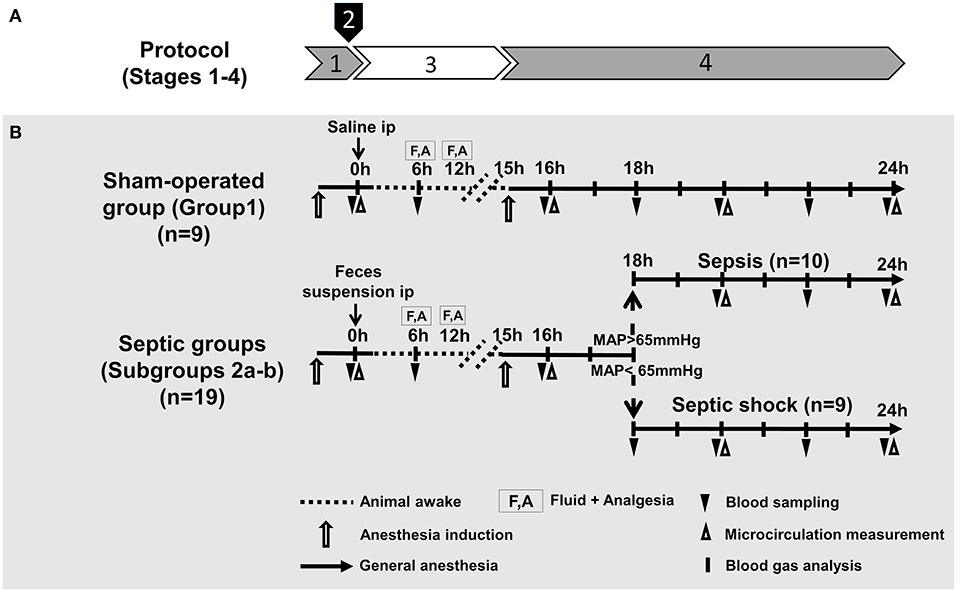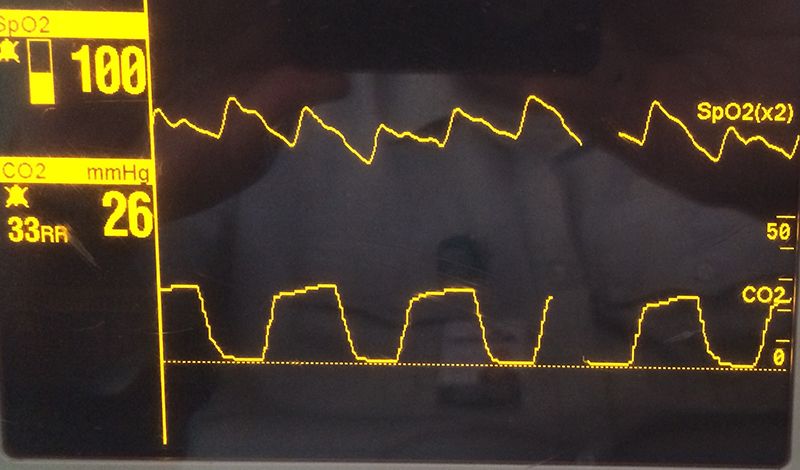low end tidal co2 sepsis
Start date May 8. There are Capnometers which display a numeric reading of the CO2 Waveform Capnography which creates a graph of the CO2 as well as certain aspects about how the patient is breathing and.

Vasopressors Demystified An Overview Of The Physiology Of Vasopressors Including When To Start When To Use Periphera Icu Nursing Icu Icu Nurse Critical Care
Low EtCO 2 with other signs of shock indicates poor systemic perfusion which can be caused by hypovolemia sepsis or dysrhythmias.

. In fact its commonly called the ventilation vital sign. The normal values are 5-6 CO2 which is equivalent to 35-45 mmHg. Am J Emerg Med.
Prehospital identification and initiation of therapy for severe sepsis may. More Than Just a Number. A low end-tidal CO 2 value is a real-time severity marker of intra-anaesthetic acute hypersensitivity reactions.
Capnography measures ventilation through a metric known as end-tidal carbon dioxide EtCO2. End-tidal carbon dioxide ETco 2 monitoring provides valuable information about CO 2 production and clearance ventilation. From a retrospective single-center case-control study comparing low end-tidal carbon dioxide ETco2 postinduction in hypotensive patients due to anaphylaxis compared to other causes a low ETco2 contributed to the diagnosis of anaphylaxis.
Capnograph is an indispensable tool for monitoring metabolic and respiratory function. End Tidal CO2 monitoring is essential as it is the fastest indicator of ventilatory compromise. What is the normal range for capnography.
End-Tidal CO2 monitors do exactly as the name implies they monitor CO2 in the air that we breathe out. We also set out to examine the association of etco2 with lactate shock patient outcome and organ dysfunction. The results therefore suggest that in mechanically ventilated patients with severe postinduction hypotension ETco2 should be.
There are four groups in this study. Theres a piece in the Orlando Sentinel about etco2 as a trigger for sepsis alerts. Additionally low end-tidal carbon dioxide ETCO 2 levels have been associated with lactic acidosis organ dysfunction and mortality in ED patients with suspected sepsis.
To date no large studies have prospectively evaluated the relationship between etco2 and SCV o2 during early quantitative resuscitation for severe sepsis or septic shock. To determine the utility of a prehospital sepsis screening protocol utilizing systemic inflammatory response syndrome SIRS criteria and end-tidal carbon dioxide ETCO2. End-tidal carbon dioxide is associated with lactate levels and mortality in emergency department patients with suspected sepsis.
Discover the key facts in understanding this technology and its implications in clinical practice. We conducted a prospective cohort study among sepsis alerts activated by emergency medical services during a 12 month period after the initiation of a new sepsis screening protocol. In MAP group FR began when MAP at most 100 mmHg.
Why do we measure end tidal CO2. ETCO2 emergency department monitoring and critical. Sham n 5 CLP n 10 end-tidal carbon dioxide ETCO 2 n 10 and mean arterial pressure MAP n 10In ETCO 2 group fluid resuscitation FR began when ETCO 2 at most 25 mmHg.
Search titles only By. 908-917 View in Article. Cecal ligation and puncture CLP was used to cause severe sepsis in male SpragueDawley rats.
In critical care End Tidal CO2 monitoring is used to assess adequacy of circulation to the lungs which provides clues about circulation to the rest of the body. End tidal CO2 for sepsis alert. Although the normal range for CO2 should be between 35-45mmHg CO2 monitoring gives healthcare providers a lot more insight into what is going on with a patients condition.
The hinges represent the first and third quartiles the notches represent the 95 confidence interval CI of the median and the whiskers extend to 15 interquartile range. Why is CO2 high in. New posts New.
To determine the use of end-tidal carbon dioxide etco2 as an end point of sepsis resuscitation. The single center study was a prospective observational cohort study evaluating end-tidal carbon dioxide as a resuscitative end point for sepsis 8. A low end-tidal CO2 may indicate poor perfusion hypovolemia or sepsis.
End-tidal capnography or end-tidal CO2 EtCO2 monitoring is a non-invasive technique that measures the partial pressure or maximal concentration of carbon dioxide CO2 at the end of an exhaled breath. There is more than one version of this tool. Low EtCO2 with other signs of shock indicates poor systemic perfusion which can be caused by hypovolemia sepsis or dysrhythmias.
On the other hand a high CO2 reading may indicate airway narrowing. This was a prospective observational single-center cohort study of emergency department patients receiving treatment for severe sepsis with a quantitative resuscitation protocol. Also called capnometry or capnography this noninvasive technique provides a breath-by-breath analysis and a continuous recording of ventilatory status.
44 Hypercapnia is deemed acceptable in this context in the absence of increased intracranial pressure. Three etco2 readings were taken during a 1-minute time frame at 0 3. The normal values for patients regardless of age sex race or size range between 35-45 mm Hg or about 5 CO2.
EtCO2 values are recorded in mm Hg millimeters of mercury a unit of pressure. New posts Search forums. The Surviving Sepsis guidelines endorse low-tidal-volume ventilation 6 ml per kilogram of predicted body weight with a goal of maintaining end-inspiratory plateau pressures of less than 30 cm of water.
Maximum end-tidal carbon dioxide Et co 2 within 5 minutes of the onset of mechanical ventilation in the operating room ORBox plot with data points overlaid. In this study the aim was to review the applications of end-tidal carbon dioxide ETCO2 monitoring in emergency department multiple databases were comprehensively searched with combination of following keywords. When CO2 diffuses out of the lungs into the exhaled air a device called a.
Hunter CL Silvestri S Dean M et al.

C Roc Curves For Predicting Severe Sepsis Auroc Area Under Receiver Download Scientific Diagram

Evidence Supports Using End Tidal Carbon Dioxide To Detect Prehospital Sepsis Jems Ems Emergency Medical Services Training Paramedic Emt News

6 Useful Sepsis Assessment And Treatment Tips Capnoacademy Capnoacademy

Icu One Pager Icu Nurse Critical Care Icu Nursing Critical Care Nursing

Pdf Sepsis Early Recognition And Treatment In Prehospital Setting Vital For Patient Outcomes Semantic Scholar

C Roc Curves For Predicting Severe Sepsis Auroc Area Under Receiver Download Scientific Diagram

Frontiers A Porcine Sepsis Model With Numerical Scoring For Early Prediction Of Severity Medicine

Pin On Educational Medical Diagrams

Diagnostic Criteria For Sepsis Infection Documented Or Suspected And Download Table

How Capnography Can Be Used To Identify Sepsis

Use End Tidal Carbon Dioxide To Diagnose Sepsis Jems Ems Emergency Medical Services Training Paramedic Emt News

Sepsis Management For The Nephrologist American Society Of Nephrology

End Tidal Carbon Dioxide Is Associated With Mortality And Lactate In Patients With Suspected Sepsis The American Journal Of Emergency Medicine

Jems Using Etco2 To Detect Sepsis Youtube

Evidence Supports Using End Tidal Carbon Dioxide To Detect Prehospital Sepsis Jems Ems Emergency Medical Services Training Paramedic Emt News

Procalcitonin In Paediatric Sepsis Topic Of Research Paper In Clinical Medicine Download Scholarly Article Pdf And Read For Free On Cyberleninka Open Science Hub


